DINOSAURIA

CORDIALS AND CONSERVATION
EDUCATION CALENDAR
DONATE WOOD WOOL
SUSTAINABLE GARDENING

DINOSAURIA

CORDIALS AND CONSERVATION
EDUCATION CALENDAR
DONATE WOOD WOOL
SUSTAINABLE GARDENING
Starting in April 2023, we are introducing a new conservation speaker series— Cordials and Conservation This series of intimate events will feature guest speakers alongside dinner and craft cocktails, while guests learn about conservation initiatives right here in our backyard.
Florida is part of The North American Coastal Plain. This is the 36th Global Biodiversity Hotspot, ranging from the southwest, to the southeast and the northeast. Florida is the most biodiverse area in this hotspot with 269 endemic species and the highest diversity of plant families in the US. Unfortunately, many of these species are threatened due to human activity.
We are committed to protecting Florida plant and wildlife species via partnerships throughout our state. Cordials and Conservation will highlight the plight of our ecosystems, plants and wildlife, while recognizing the wildlife heroes working to conserve our biologically rich and diverse region.
Each event will feature a guest speaker and conservation topic such as:
• Striped newts: discuss our partnership with the Coastal Plains Institute to breed newts specifically for release into the Apalachicola National Forest
• Manatees: examine the manatee crisis in the Indian River Lagoon, lessons learned and next steps to support marine wildlife and manatees

• Monarchs and milkweed: discover information about Florida initiatives to protect the diversity of native milkweed while planting it in the landscape to support healthy monarch butterfly populations
To learn more or express your interest in attending one of these unique events, reach out to:
development@jacksonvillezoo.org
2 Dinosauria
4 Who's Who at the Zoo
6 Garden Highlights
8 What's New
11 JaxZoo Tube
12 Newsworthy Updates and Events
14 Environmental Symposium
SENIOR MANAGEMENT
Jeff Ettling, PH.D., President and CEO
Teresa Kennedy, Chief Operating Officer
David Hagan, Chief Zoological Officer
Holly Ellis, Chief Financial Officer
Nikki Smith, Chief Development Officer
Paula Shields, Chief People and Culture Officer
Leanne White, Director of Education
Kelly Rouillard, Director of Marketing & Sales
Rick Holzworth, Director of Support Services
Todd Martinsen, Director of Guest Services
Chuck Ged, Chair
Missy Peters, Secretary
George Mikes, VC Finance & Treasurer
Anne Marie Cushmac, VC Governance
Lucia Lindsey, VC Capital Campaign
Salmaan Wahidi, VC Animal Care, Conservation and Wellness
Paula Renfro, VC Education
Karen Estella Smith, VC Garden & Art
Kerri Stewart, VC Special Projects & Properties
John Hayt, Honorary Advisor
15 Education Calendar
16 Sustainable Gardening
18 Browse Program
20 Donate Wood Wool
22 Coquerel's Sifaka
24 Social SpotLight
26 Snapshot Society
GENERAL BOARD
Paul Blackstone
Scott Chamberlayne
Jonathan Coles
LeAnna Cumber (COJ)
Lenny Curry (COJ)
Kenyonn Demps
Al Ferraro (COJ)
Dan Fields
Wilfredo Gonzalez
René Kurzius
Barnwell Lane
Clint Pyle
Param Sahni
Paul Sandler
Joel Swanson
Scott Witt
HONORARY BOARD
Danny Berenberg
Ivan Clare
Dano Davis
Diane David
Lenore McCullagh
Elizabeth Petway
Herbert Peyton
Clifford Schultz
Frank Surface
Janet Vaksdal Weaver
HONORARY PAST
CHAIRS COUNCIL
Martha Baker
J.F. Bryan
Howard Coker
Charles Commander
Jed Davis
Matt Fairbairn
Joseph Hixon
J. Michael Hughes
Lewis Lee
David Loeb
Richard Martin
Frank Miller
John A. Mitchell
Thomas Schmidt
Bill Rowe
Carl "Hap" Stewart
James Stockton
Penny Thompson
Courtney Wilson

Travel back millions of years to experience the thrill of the prehistoric age of dinosaurs. Along the way, join forces with our team of educational scientists to unravel the environment dinosaurs lived in and the plants they consumed. Come and see 18 of the most fascinating dinosaurs including Triceratops and the mighty Tyrannosaurus Rex.
Carnivores, herbivores or omnivores? Test your dinosaur knowledge with fun and fascinating activities at Dinosauria. Learn about paleobotany—the study of terrestrial fossils including the study of prehistoric fossils, and how plants from prehistoric ages are ancestor species to those found in Florida!

Journey along paths with full-scale, scientifically-accurate animatronic dinosaurs with realistic movements and roaring sounds. Find out how dinosaurs evolved over time, where they lived, how they behaved and the discoveries paleontologists and paleobotanists have made about their habitats.
Kids can hone their artistic skills with the Drawing Alive Digital Game by coloring dinosaurs and watching them digitally come alive on screen. Plus, artwork is a take home souvenir for kids to enjoy.

Beginning February 17, this experience will be added to the Total Experience package. Members will also be given the exclusive option to purchase Dinosauria a 'la carte, on-site only.
Thursday, February 16 · 1 pm–5 pm
Those covered under a membership will receive a wristband upon entry to the Zoo on February 16 only. No ticket necessary, just present your Member ID card at the entrance. This preview is for Members only and does not include those entering with Member Guest tickets.
How long have you worked at the Zoo?
I have worked at Jacksonville Zoo and Gardens since October 10, 2022.
What does a day in your shoes look like?
I have the terrific opportunity to work with the animal care, conservation and wellness teams. Though my day is spent mostly working and connecting with the teams, I do find time to get out and see the animals, plants and guests each day.
What were your previous jobs/career paths and how did they lead you here?
I spent over three decades at the Indianapolis Zoo. My first full-time position was as an Animal Keeper at the Indianapolis Zoo working in the Plains biome with African species. Over the years, I held various positions with increasing responsibility, and I oversaw almost all areas and taxa within the Life Science department at one time or another as a Curator. I developed a strong interest in animal care and welfare, exhibit design, education, research and conservation. While there, I was involved in the care of a wide variety of animals but have worked the longest with elephants. I was a part of numerous elephant research activities, including data gathering on memory, visual acuity, cognition, physiology and behavior. We contributed to notable reproductive research that resulted in six African elephant calf births through artificial insemination. I was able to participate in and build a team approach to design, development, construction and openings of multiple exhibits.
Additionally, I have been an accreditation inspector with the Association of Zoos and Aquariums (AZA) for many years and have been active in several AZA animal programs. I currently serve as the Elephant Taxon Advisory Group (TAG) Chair, African Elephant Species Survival Plan (SSP) Coordinator and was a long-standing member of the Lion SSP management group.
What is your favorite animal?
I love all plants and animals and have had the privilege to work with many distinct species and teams over the years. The one species I have worked with and am deeply passionate about is elephants.
What is your favorite exhibit?
Wow, this is a difficult question! I have several favorites at the Zoo. It would be difficult to pick just one. Some of my top picks are Range of the Jaguar, African Forest, Land of the Tiger and African Savanna Blooms Garden.
When or how did you first develop an interest in animals/the zoo world/education?
I was always interested in working outdoors and at first thought I wanted to be a forest ranger. I learned of an explorer post hosted by the Louisville Zoo. I joined the post while I was in high school and as part of the experience, we were able to assist with animal care. The explorer post only lasted a year or two and was led by the General Curator. Once the post came to an end, he allowed anyone interested to continue to volunteer in animal care. I continued to participate in this experience throughout high school and college. During this time, my interest in animal training, conservation, guest education and multi species exhibits solidified. I was hooked and this experience started me on my career path today.
Where are you from?
I was born and raised in Louisville, Kentucky. I went to college at Eastern Kentucky University and received a degree in Biology and minor in Chemistry. In college, I met my future wife who spent most of her life growing up in Fort Myers Beach, Florida.
What do you like to do in your free time?
I love to go hiking and walking; to explore new places in the wild and in the city. Kim and I are excited to be here and explore all that Florida and Jacksonville have to offer.
What is your favorite part of your career or what is your most memorable experience at the Zoo (or your old zoo)?

The opportunity to work and build collaborative relationships with other zoos, universities and scientists over the years as we worked together to continue to raise the bar in caring for animals and plants at the Indianapolis Zoo and White River Gardens, has been a highlight of my career. Those relationships and collaboration led to the first African elephant to be conceived via artificial insemination (AI) and was the first of six calves born at the Indianapolis Zoo. In looking at partnerships and collaborations, Zahara, currently pregnant (via AI), was sired by Ali from Jacksonville Zoo and Gardens. With these partnerships, we can do so much to advance science and care.


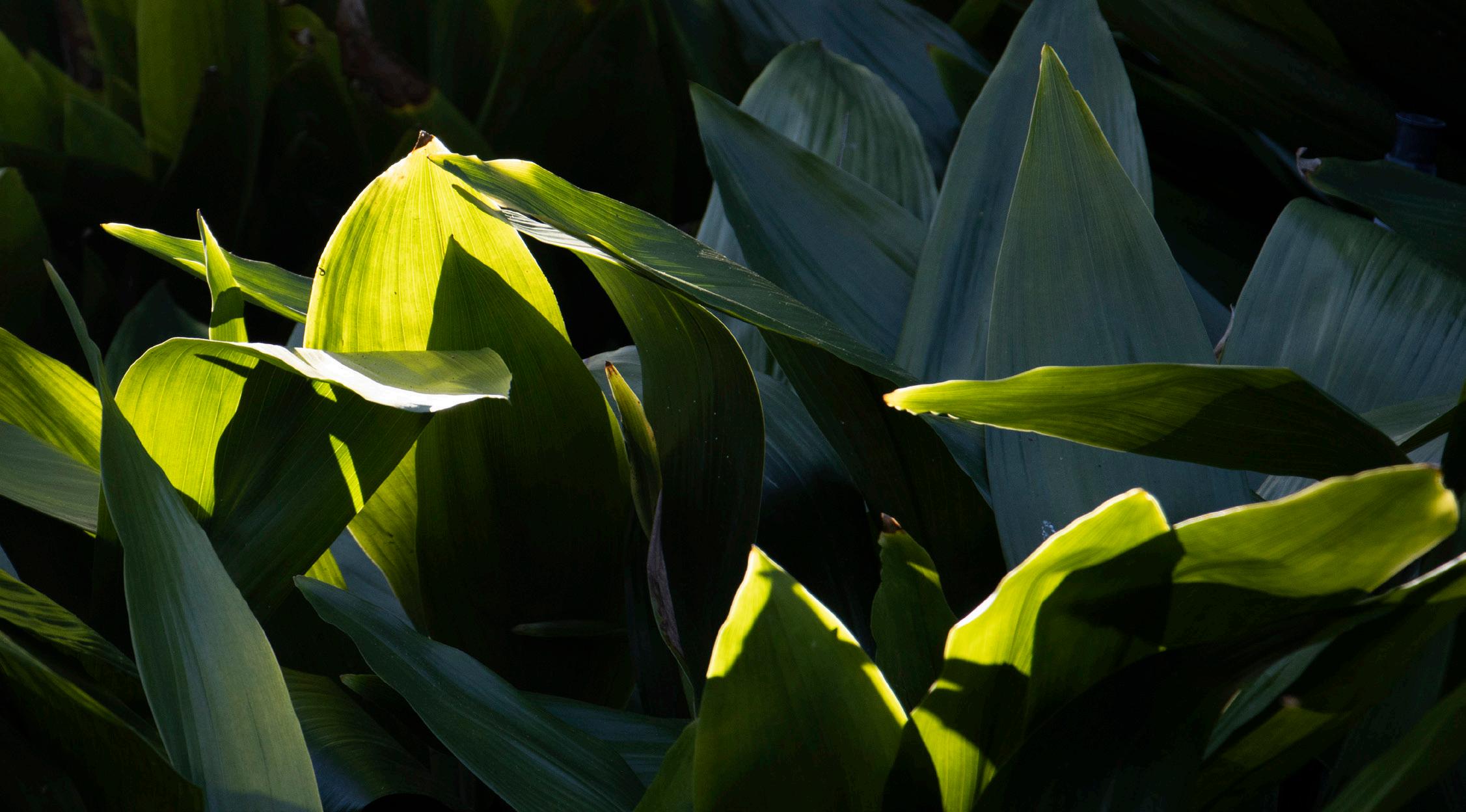
 Top: Cast Iron Plant, Aspidistra elatior located on Main Path accross Trout River Grill
Bottom: Supertunia Vista Snowdrift, Petunia hybrid and Snapdragon Snapshot Red Bicolor, Antirrhinum majus located in Savanna Blooms
Top: Cast Iron Plant, Aspidistra elatior located on Main Path accross Trout River Grill
Bottom: Supertunia Vista Snowdrift, Petunia hybrid and Snapdragon Snapshot Red Bicolor, Antirrhinum majus located in Savanna Blooms

(Vanellus miles)
Native to Australia, New Zealand, Indonesia and other surrounding islands, the Masked lapwing is a new species for Jacksonville Zoo and Gardens. These ground-nesters like to inhabit marshes, grasslands, beaches and have even adapted to urban areas. Their diet consists of insects, worms, spiders, seeds, mollusks and crustaceans. While foraging for bugs, Masked lapwings will use the “foottrembling” technique. Instead of searching the ground with their beaks, they stomp or tap their feet, shaking
the grass, leaves and loose dirt to wake up any sleeping critters—making them easier to find. At the Emerald Forest Aviary, you might be able to easily spot these birds due to the yellow “masks” on their faces, which are part of their wattle that clearly extends past their beak. Both male and female masked lapwings have them, although the male’s may be larger. Visit the Zoo to see for yourself these peculiar yet intriguing looking birds.
Dark, glossy feathers, with a bright red crest atop its head, the male Crested wood partridge is easily distinguishable from its female counterpart (grey head, green body and brown wings). But both are extraordinary despite their small size. Their legs may be short, but they are strong, giving them the ability to quickly walk and run over rough terrain and through tropical forests with ease. These terrestrial birds can also be found in foothills and grasslands throughout the Malay peninsula, Sumatra and Borneo. Mostly feeding on seeds, fruit, beetles, ants and small mollusks, Crested wood partridges have also been seen eating large fruit fragments left over from wild pigs that they normally would not be able to eat on their own when whole. Fast and resourceful, it just goes to show you should never underestimate the little guy. See the Crested wood partridge in the aviary in Elephant Plaza.

Named after the distinct shape of their heads, the Caatinga lancehead (pronounced kah-ching-uh) is endemic to northeastern Brazil. These venomous snakes can be found in different types of habitats, from dry forests to open rocky terrain. Their coloring can vary between different shades of brown with black or dark brown triangular markings alternating down the body.

July–September
Their bellies can be a yellowish tan with gray blotches on the sides. The average length for a Caatinga lancehead is between 15 and 16 inches, but the longest ever recorded was two and a half feet. To catch a glimpse of these stunning vipers, a first-time species for the Zoo, look in the exhibit windows inside the Dinosauria Entrance Building, in the Australia Loop.
LEGEND: 0.1.2
• First digit male. Second digit female
• Third digit sex unknown
• Two digits only represent male and female
• CAPS = Endangered Species
• * (Asterisk) = First time at the Zoo
• †(Dagger) = Released back into the wild
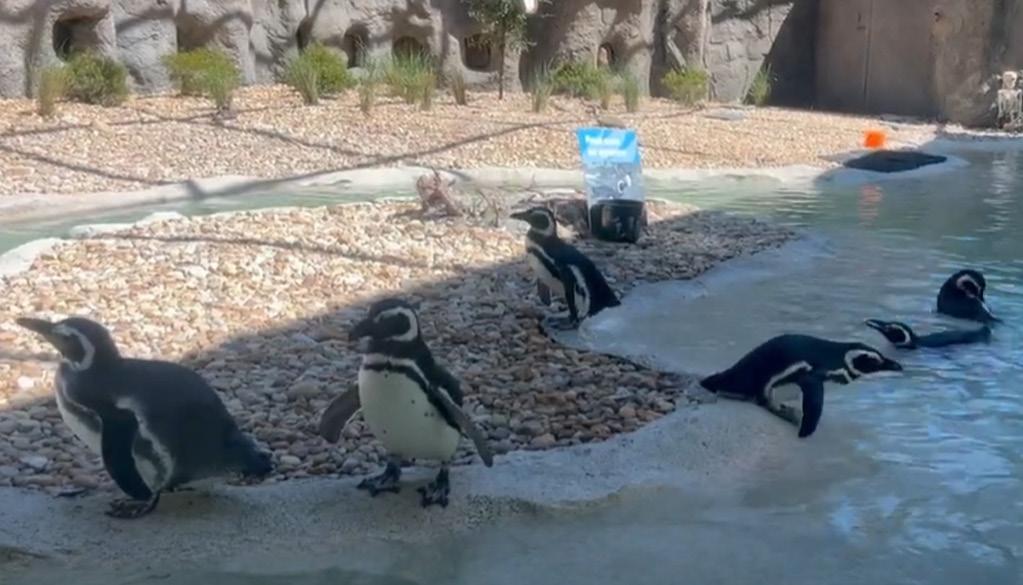

Aardvarks Eat Smoothies Too


Gets the Courage to Meet Friends
To see additional videos please visit our YouTube Channel
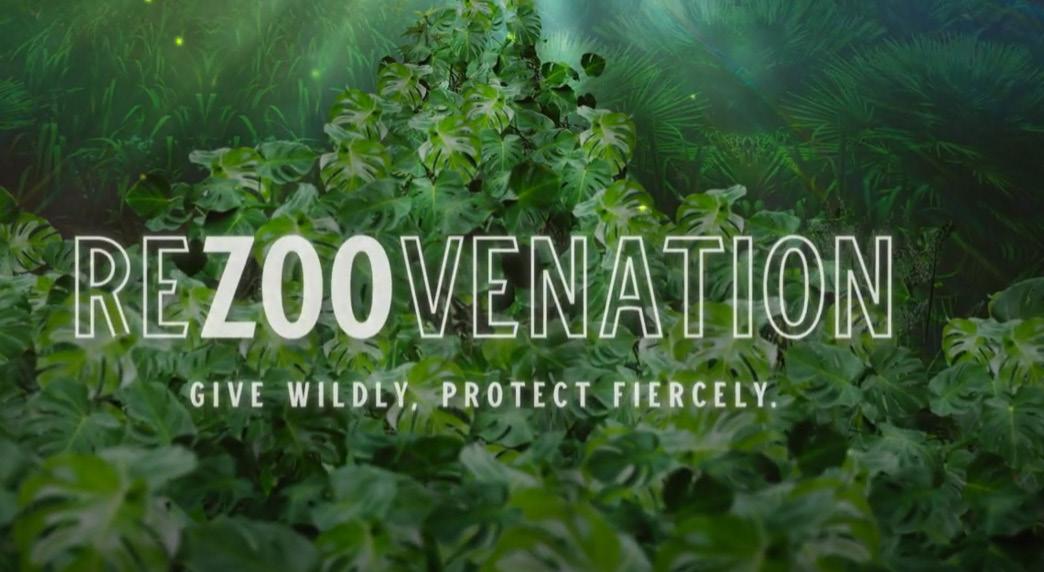
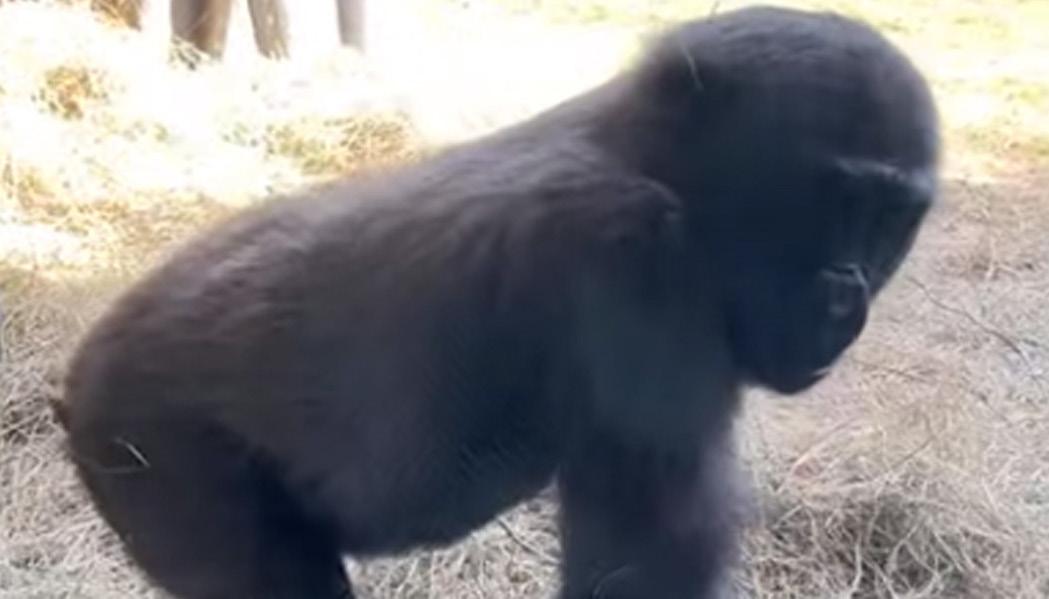

On January 4, NBC Nightly News: Kids Edition visited to learn more about our magnificent giraffe herd! Lester Holt, the host of the show, spoke with Tracy Fenn, Curator of Mammals, about their uniquely long necks and docile personalities. They also discussed how giraffes are facing what’s being called a “silent extinction” and what Jacksonville Zoo and Gardens is doing to help them in the wild. You can find the segment around the 10-minute mark.


Veterinarian Meredith Persky is one of fewer than 300 veterinarians, and the first veterinarian at the Zoo to be recognized as a Diplomate of the American College of Zoological Medicine (ACZM).
ACZM is a specialty board recognized by the American Veterinary Medical Association (AVMA) that certifies veterinarians with expertise in zoological medicine. ACZM is often considered one of the most difficult colleges for acceptance, due to the amount of experience and documentation necessary to qualify for, and subsequently pass, the certification exam.
In order to become an ACZM Diplomate, a veterinarian must have a minimum of six years of professional experience in zoological medicine, or three years in an approved residency program, be the primary author on at least three peerreviewed publications, including an original research study, provide three personal reference letters, and successfully complete a two-day examination. Just meeting the criteria to take the exam is a years-long, incredible feat. The exam itself covers information from many textbooks and five journals of the major peer-reviewed literature in zoological medicine. Spanning two days, the exam is a process consisting of 300 questions each day, across a myriad of species.
Put these on your radar, mark your calendars, add to your to-do lists or plan ahead for these amazing events. More information about each event will be forthcoming via member emails, social media posts and on our website.
Join us for Jacksonville's premier annual fundraiser, for the 26th year. Immerse yourself into a world of beauty featuring larger-than-life gardens, interactive and unique entertainment, traditional French cuisine and a live and silent auction. Proceeds support the care and feeding of our animals, lush botanical gardens, educational programs and conservation initiatives abroad.
Saturday, April 1, 2023
6 pm to 10 pm
Tickets coming soon.
Brunch with the Bunny is our popular spring Member event.

• Enjoy the spring breeze while you fellowship with family and friends on Shaba Terrace.
• Indulge with a delectable catered brunch the whole family can enjoy.
• Create kid-friendly crafts.
• Meet, greet and take a photo with the Easter Bunny. Available for purchase at Mystery Pix.
Tickets coming soon.

Wine and goats—the perfect pairing! Spend time with family or friends and soak up the energy of this unique experience curated exclusively for adult-only Members. Enjoy a glass of wine while marveling at these cute and cuddly friends. They'll vie for your attention (and snacks), so try not to spill your drink! Not to mention they are the best in selfies. This is a great birthday gift for any animal lover or just a great way to spend an amazing evening.
Tickets coming soon.
Celebrate creativity in all its forms during the Art in the Garden Festival. It is your chance to experience intriguing art, curated music and extraordinary living pictures all within our lush gardens. Stroll through the Zoo enjoying and appreciating art and plants, and kids can enjoy special activities. Listen to live music in the open air and shop local vendors. Support local businesses and vendors by bringing home your own art and goods. Complimentary pick up of purchased products is available as you exit the Zoo. A unique selection of tasty food and refreshing drinks will also be available for purchase.
Admission is included with daily Zoo tickets.
Each fall semester, our Advanced Inquiry Program (AIP) first-year graduate students take an Environmental Stewardship: Florida Sustainable course where they learn about all things sustainable in the greater Duval county. As part of their Conservation Biology coursework, students participate in experiential learning days at the Zoo and in the community to learn from experts in the conservation field. As part of the Environmental Stewardship course, students engage in sustainability efforts at grassroots, corporate, municipal and non-profit levels. They focus on environmental concerns in Northeast Florida and what efforts are being implemented to mitigate these issues.
As part of the AIP course, students attend the annual Jacksonville Environmental Protection Board’s Environmental Symposium at the University of North Florida’s campus where they are exposed to various projects taking place around Duval county and network with community professionals in the field. This October, keynote speakers included city officials such as Jacksonville’s first Resiliency Officer, Anne Coglianese. She shared plans and assessments of the City's ability to withstand various threats and how the coastal Southeast is vulnerable to facing a

changing climate, such as sea-level rise. Additionally, local research scientist and professor Dr. Gerry Pinto presented the State of the River report, which outlines the health of the Saint Johns River with timely data compiled from scientists working in various disciplines. In addition, grassroots level work was showcased in breakout sessions, including one session by the Zoo's very own W.I.L.D. (Wildlife, Inclusion and Leadership Development) Program, a teen program that employs at-risk teens in Jacksonville in the education department. The W.I.L.D. Program’s high school seniors, along with several community partners (including Groundwork Jacksonville, Timucuan Ecological Preserve and Saint John’s Riverkeeper) shared their experiences with community-based conservation initiatives and how partnerships can strengthen our efforts and reach in the environmental field.
Learn more at: jacksonvillezoo.org/AIP
Spring Zoo Camp
March 13–17, 2023
Ages K–5th
jacksonvillezoo.org/zoo-camps
Summer Zoo Camp
June thru mid-August 2023
Ages K–8th
jacksonvillezoo.org/zoo-camps
Saturdays 9 a.m.–12 p.m.
All Ages
Wild Family Workshops is an opportunity for families to spend quality time together, explore and learn about plants and animals, while participating in hands-on, nature-based activities. This program is intended for children 4+ years old and their families. jacksonvillezoo.org/wild-family-workshops
Tuesdays & Saturdays
8:45 a.m.–9:30 a.m.
Ages 0–3
Pack up the stroller, put on your walking shoes and bring your little one on an early learning adventure as we stroll through the Zoo. Make new friends while you visit animal exhibits, meet a friendly animal ambassador, read a story and explore the animal world with all your senses!
jacksonvillezoo.org/stroller-safari
Saturdays 10 a.m.–12 p.m.
Outdoor Explore! is our free family nature club. Each month we meet in a different location to explore green spaces around our city and interact with the natural world! jacksonvillezoo.org/outdoor-explore
Sustainability is a hot topic amongst the environmentally conscious. Eliminating individual use plastics, being mindful of how our goods are sourced and curbing utility use are all effective ways to contribute. Mindful sustainability practice can be applied to gardening as well, using the Florida Friendly Landscaping (FFL) principles developed by the University of Florida. These nine principles, when combined, create a high-yield, low-input green space which provides resources to local wildlife while protecting the surrounding environment.
Every plant has unique soil, sun, space and water needs. Being mindful of these needs and selecting plants whose needs match with the environment you are planting in significantly reduces the number of resources needed for your plants to thrive.
Water Efficiently
Mindful watering practices reduce water consumption and the amount of runoff that enters our waterways. Plants should only be watered if their soil is completely dry and irrigation systems should be checked for overspray and fitted with a rain sensor to reduce wasteful watering.
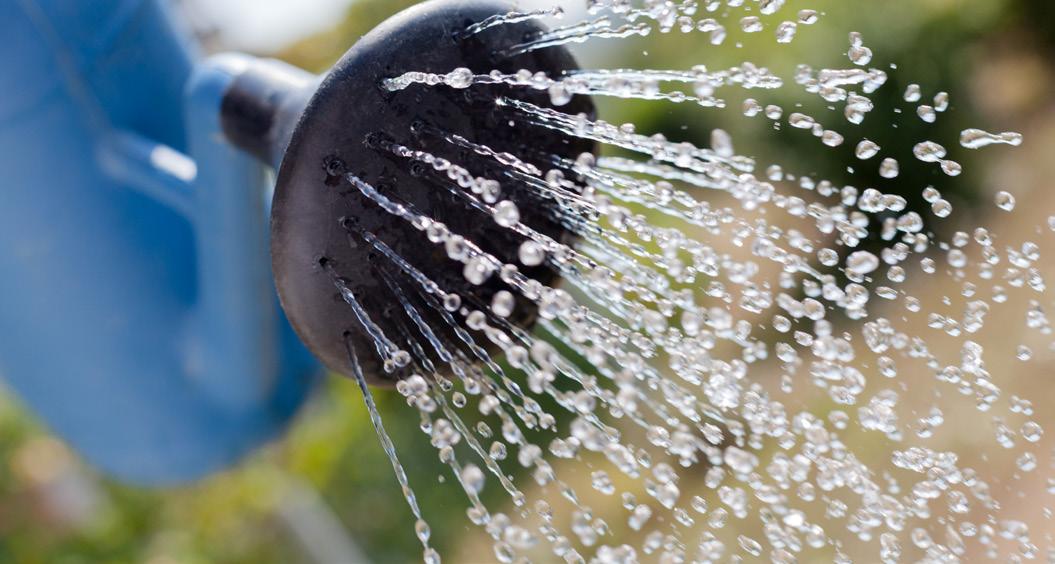
Fertilizing is an important part of any garden, but care must be taken. Overfertilizing can damage your plants, as well as the environment, if it enters our waterways. Always follow the directions on the fertilizer you are using, and never fertilize near bodies of water or pathways that lead to water (like drainage ditches.)
A layer of mulch, leaves, or pine straw over your topsoil provides many benefits. It lowers watering needs by retaining moisture and helps insulate plant roots from wintry weather. It also amends the soil with nutrients as it decomposes, reducing the need for fertilizer.
 Wildlife
Wildlife
Selecting plants that provide berries, nectar or shelter creates a green space that can be enjoyed by both humans and animals. Utilizing plants native to your area ensures that you are providing an ideal habitat for local fauna. Visiting wildlife can provide plant pollination, soil aeration and pest control among many other benefits.

Aphids, mealybugs, lubbers and many other planteating pests call Florida home. When combating infestations, pesticide may not necessarily be the best option. Many pest issues can be solved by mechanical removal with a simple jet of hose water or a gloved hand, and pest-resistant plant species are available to offer another line of defense. If pesticide is needed, selecting one specifically tailored to the type of pest you have and only spraying affected areas is best. Broad spectrum pesticides can also kill beneficial insects like predators and pollinators.
Clippings, dead fall, thatch and fallen leaves all have their uses, even beyond compost. Thatch, leaves and other small debris can be used as natural mulch which provides homes and nesting materials for native wildlife. Fallen limbs can be used as a border which provides shelter to even more forms of wildlife.
Rainwater shed from our yards is loaded with fertilizer, topsoil and other debris which has a damaging impact on our waterways' ecology. Planting groundcover, shallow rain gardens, raising perimeter soil and using permeable materials for paths and driveways can all help slow down water runoff. During drier times, these steps have the added effect of optimizing irrigation water.
Florida is home to a dazzling array of springs, beaches, lakes and rivers. Protecting our natural water sources is vital to both the ecological and economic health of our state. The most crucial step to take is to institute a "NoMow Zone" extending 10 feet around water features. No mowing, fertilizer or pesticides should be applied in this area. Native aquatic plants, of which there are many attractive varieties, should be encouraged and invasively weeded out.
By utilizing these simple principles, you are sure to see an improvement in your garden, local environment and bottom line as well. Multiple communities and HOAs around Florida have reported thousands of dollars in savings on water, pesticides, fertilizer and new plants since switching to FFL landscaping practices.

 By Tracy Fenn, Curator of Mammals
By Tracy Fenn, Curator of Mammals

Browse is plant material provided for animal nutrition, health and enrichment purposes. It encourages natural eating and foraging behaviors when provided to leafeating herbivores like rhinos, giraffes, warthogs, antelopes, tortoises, apes, monkeys and lemurs. Elephants are the biggest consumers of browse, which is critical to their dental and gastrointestinal health. Many species, like primates, birds and reptiles, are provided tree branches as natural perching and climbing structures.
Animal care staff harvest browse off-site through partnerships with nearby corporate and private landowners. Collecting sufficient amounts and types of browse for animal wellbeing requires a significant investment of time and personnel. Available sources are declining due to land development and other factors, but the community can help!
Fresh trimmings of approved tree and shrub species that are pesticide-free can be donated for browse. Instead of piling trimmings at the curb for yard waste pick-up, bring it to the Zoo! If your load is too large for your vehicle and within 10 miles of the Zoo, we may even be able to send a crew and truck to your location for pick-up. Alternatively, we welcome new partnerships with landowners willing to allow our staff to harvest browse on their acreage.
Help support the Browse Prgram at: jacksonvillezoo.org/browse


 By Tracy Fenn, Curator of Mammals
By Tracy Fenn, Curator of Mammals
Wood wool is a product made from long, thin wood shavings. It is commonly used as packaging material for fragile items like ceramics, bird baths and statuary, but at Jacksonville Zoo and Gardens it is a vital component of animal care and wellness. Wood wool provides animals with opportunities to engage in natural nesting and foraging behaviors.
The biggest fans of wood wool are the apes and their care staff. Bonobos and gorillas build new sleeping nests every night, so the provision of appropriate nesting materials is critical to their well-being. The apes often choose wood wool over hay or fabric bedding when given options. Keepers prefer it because it is reusable, thus reducing waste. Moderately soiled wood wool can be washed, rinsed, dried in the sun and reused.

Other animals also benefit from wood wool, too. Bird staff provide hand-reared chicks with wood wool to
simulate the nests that bird parents would naturally provide. Herpetology staff uses wood wool for fruit fly propagation, a food source for some reptiles and amphibians.
Jacksonville Zoo and Gardens uses a minimum of 120 bales of wood wool per year, at the cost of about $5,000! These costs are reduced through partnerships with local businesses who donate wood wool previously used as packaging. Wood wool is not accepted in curbside garbage, so donations not only help save the Zoo money, but also offer an earth-friendly option for repurposing the material as animal bedding. Plus, the donations are tax deductible!
To donate wood wool visit:
jacksonvillezoo.org/wood-wool-donation

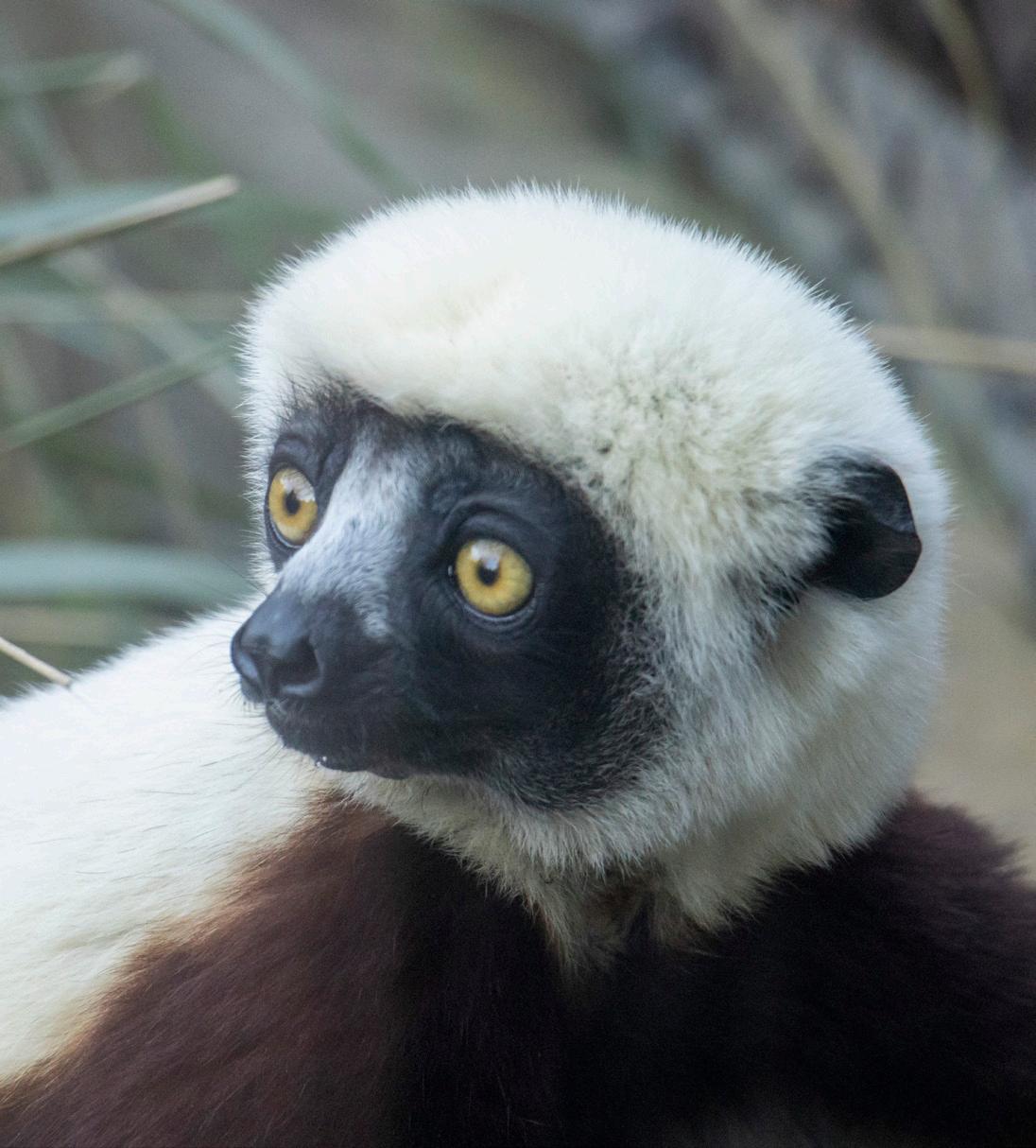
Location in the Zoo
Africa Forest
Diet
Leaves, shoots, fruits and flowers
Habitat
Dry deciduous and semi-evergreen forest
Range
North West of Madagascar, in areas north and east of the Betsiboka River
Conservation Status
IUCN Redlist CR
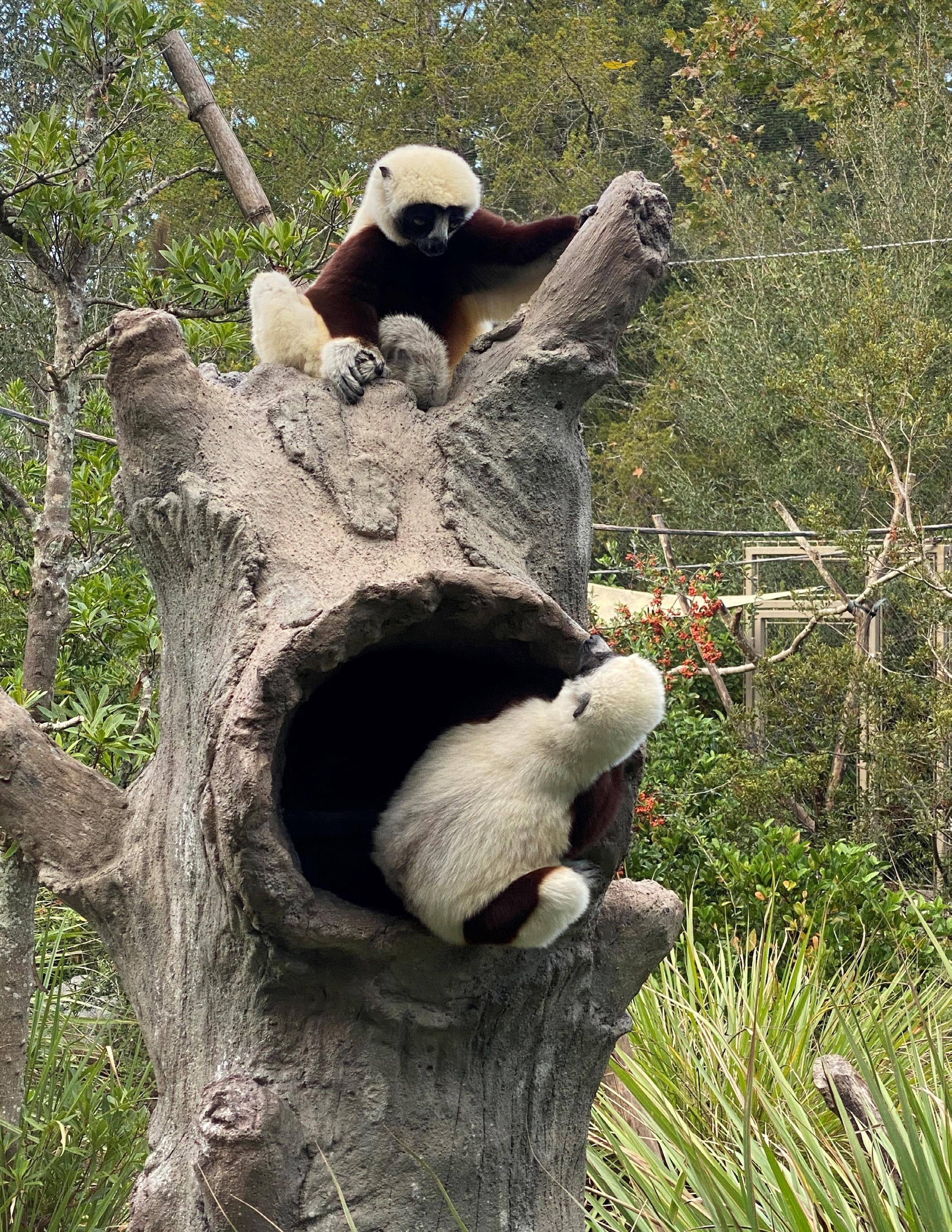
Tag your posts with #jaxzoomember for a chance to see your pictures or videos in Wild Magazine.



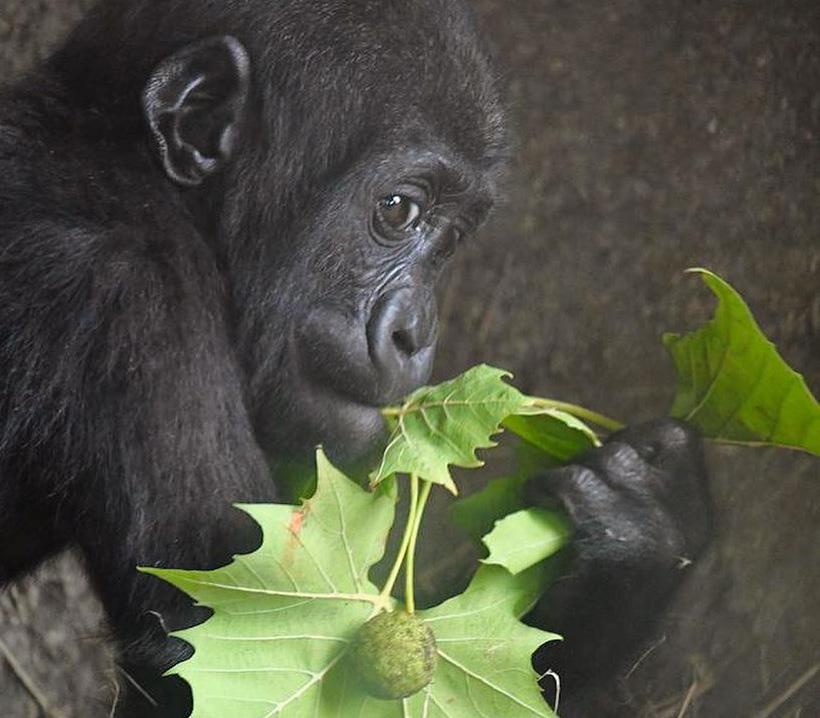
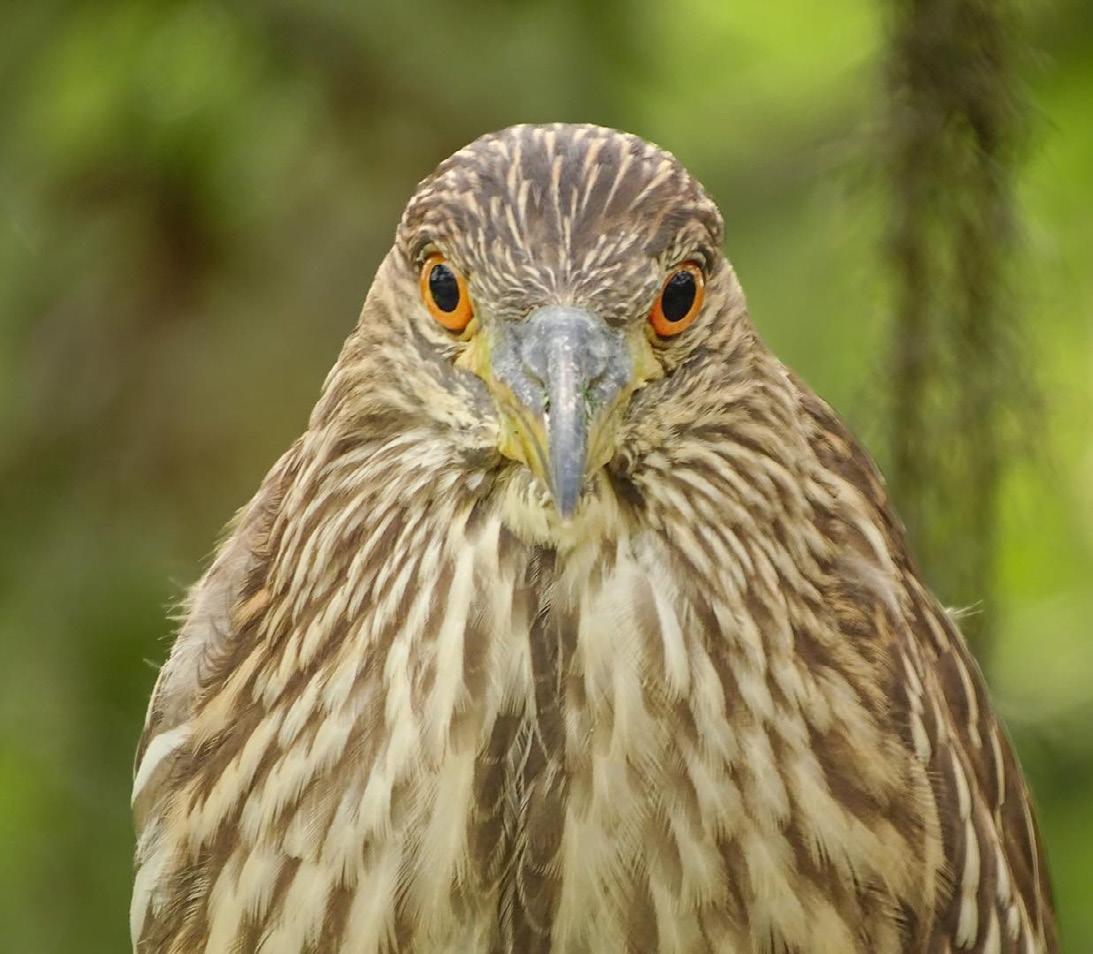
 KVOL30
KVOL30


 By John Reed, Photography Volunteer & Snapshot Society Instructor
By John Reed, Photography Volunteer & Snapshot Society Instructor
It can be frustrating when our subjects are not in the best position for us to capture the type of image we like. But we must always remember, they could care less about us and are simply going about their lives. This is true not only for photography at the Zoo, but all wildlife photography. So, what to do?
First things first, be patient. Often, a more interesting photo results when you wait for the animal to come to you rather than clomping around looking for it. This is less of a problem at the Zoo because the animals are in their habitats, but that also can make it tougher as there is less incentive for them to change position. How many times have you camped out waiting for a sleepy lion to wake up, or for any animal with its back to you to change position? Sometimes you wait and wait, and nothing happens. That is life. Move on!
That said, there are a few strategies you can employ, starting with “be ready.” By that I mean, do not just stand there staring with the camera hanging on your shoulder. Do some homework to be aware of your subject’s behaviors. Then as you watch it, you can pick up cues alerting you to bring the camera to your eye. An easy example is with any grazing animal. Every once in a while, they will raise their head to look around. That is usually your shot. If you observe long enough over time, you will learn some traits of the specific animals and know when they are likely to do this. See photos one and two.
All the big cats, some grazers and many other animals will also smell the ground and then raise up with a sort of grimace as they enhance their scent sensation. These can be really cool shots. With big cats, it can even appear to be a snarl! See photos three and four (above).


Finally, while the rear of an animal with its back to you is usually not the shot we want, if you are ready and they look back, it is a winner. See photo five.

Remember…be patient, and have fun!
Snapshot Society
For an experience worth a thousand words, the Snapshot Society offers unique, members-only access to quarterly photography classes with early entrance, networking opportunities, and personalized instruction from our expert Zoo photographer. Tickets are required for this class and must be purchased online, in advance. Learn More
Share Those Great Pictures!
Tag your posts on Instagram with #jaxzoomember for a chance to see them in Wild Magazine.
The same strategy goes for birds. If they are on a perch with their back to you, it is likely they will eventually fly off but return to the same perch with a different pose, or even just hop to change position. You just have to wait.
Interactive fun creates a curiosity for learning. As Nature Agents, you can discover, learn and bond together on a scavenger hunt!
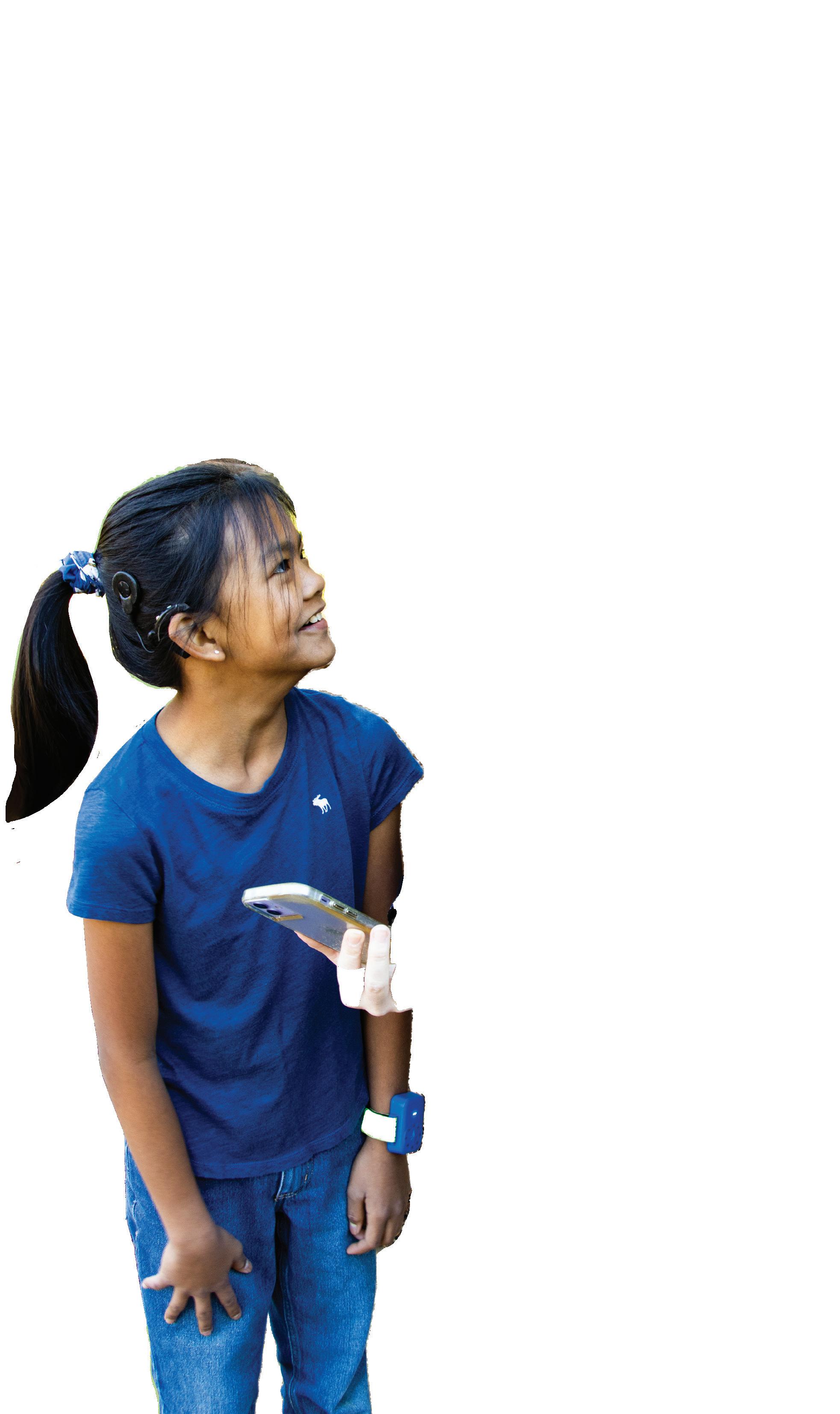

POWERED BY